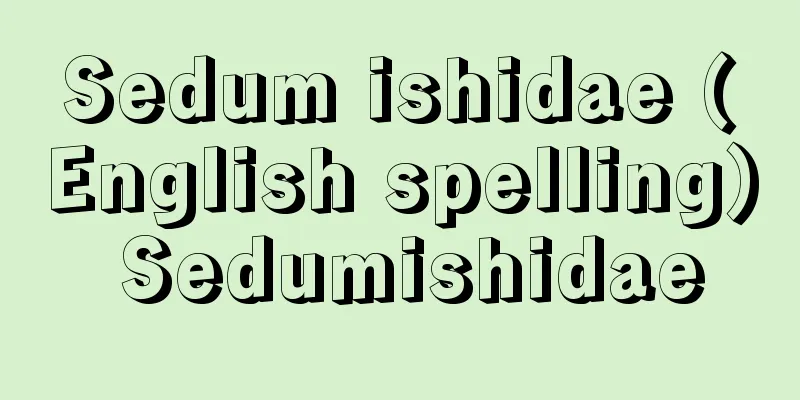Strong rice - Scary

|
〘Noun〙① Rice cooked in a steamer. Because it is hard and not sticky, it is served in a bowl , earthenware, or leaves. In contrast, the rice used in mizutaki is called katakayu or hime -meshi . Scary. [Wamyosho, Ten Volumes (around 934)] *Genji (around 1001-14) Usugumo: "This is such a place, but when you stop by like this, there are times when you can only hear of the fleeting fruit, Kowai." ② Rice with red beans used for celebrations. Red rice. Scary rice. ※Haiku poem, Kebukuso (1638), no. 7: “The dew on the leaves of the lotus is soft and fluffy, and the porridge is still hot.” [Glossary] (1) In the “Genji-Suetsumuhana” it says, “The Emperor came to visit us, and we were given a meal of rice porridge.” The words “kayu” (porridge) and “kowaii” (fancy rice) are used in contrast to each other. It seems that in the ancient and middle ages, “kowaii” was not only made from glutinous rice, as we know it today, but also from steamed non-glutinous rice. It also seems to have been used not only for rice, but also for barley and other grains. (2) In the early modern period, it mainly referred to steamed glutinous rice, and as the word "meshi" became widely used in everyday language, it came to be called "kowameshi." (3) In ladies’ language, it was called “kowakugo” or “okowa.” In particular, “okowa” came to be used to refer to red rice mixed with red beans. Gou- hangau [strong rice]Scary rice is... [Strong rice]Kowa- ikohahi [Strong meal]Source: The Selected Edition of the Japanese Language Dictionary About the Selected Edition of the Japanese Language Dictionary Information |
|
〘名〙① 米を甑(こしき)に入れて蒸して炊いた飯。粘りのないかたい飯なので、笥(け)、土器、葉などに盛った。これに対して水炊きの飯は、堅粥(かたかゆ)、姫飯(ひめいい)といった。こわい。〔十巻本和名抄(934頃)〕※源氏(1001‐14頃)薄雲「ここは、かかるところなれど、かやうに、たちとまり給ふ折々あれば、はかなき果物、こはいゐばかりは、聞し召すときもあり」② 祝いなどに用いるあずき入りの飯。赤飯。こわめし。※俳諧・毛吹草(1638)七「ふかふかと置はすの葉の露みえて いげたちやまぬ盆のこはいひ」[語誌](1)「源氏‐末摘花」には、「御かゆ、こはいひめして、まらうどにもまゐり給ひて」とあり、「かゆ」と「こわいい」が対比して用いられている。上代・中古の「こわいい」は、現在の糯(もち)米によるものだけではなく、粳(うるち)米を蒸したものもあったらしい。また、米に限らず麦、雑穀によるものにもいったようである。 (2)近世には主に糯米を蒸したものを指すようになり、また「めし」が日常語として広く用いられるに従って、「こわめし」と呼ばれるようになった。 (3)女房詞では、「こわくご」「おこわ」と呼ばれ、とくに「おこわ」は小豆を混ぜた赤飯にいうようになった。 ごう‐はん ガウ‥【強飯】こわ‐めし こは‥【強飯】こわ‐い こはひ【強飯】出典 精選版 日本国語大辞典精選版 日本国語大辞典について 情報 |
<<: The Broken Jug (English: The Broken Jug)
Recommend
Shukuin Buddhist Sculptor
During the Muromachi period, this group of Buddhis...
Addressee - Atedokoro
1. The address of the person to whom mail or other...
Meyer's Encyclopedia - Meyer's Encyclopedia
A German encyclopedia. The first edition was publi...
Oyama Shrine
It is located in Tateyama Town, Nakaniikawa Count...
Eastern Zone - Toshu
770 to 256 The name of the Zhou dynasty after the ...
Sozomenos, Salamanēs Hermeios
[Born] 400 years ago. Betherea, near Gaza Died: c....
Mejiro (Japanese white-eye) - Mejiro (English spelling) Japanese white-eye
A bird of the passerine order, family White-eye (i...
Boron chemistry (English spelling)
Chemistry dealing with boron (B) compounds. Boron ...
Blood Type O
...It is said that one of the triggers for this d...
Kisewata - Kisewata
A perennial plant of the Lamiaceae family (APG cl...
Bunsen burner
…The premixed type is a type in which fuel and ai...
Lighthouse Company - Toudaisha
A Christian organization formed in 1926 as the Jap...
Township - Go
In ancient times, it was an administrative unit be...
Scrapbook - Scrap book (English spelling)
A notebook for recording and storing newspaper an...
Kimigayo - Kimi ga yo
Japan's national anthem. The original lyrics ...









